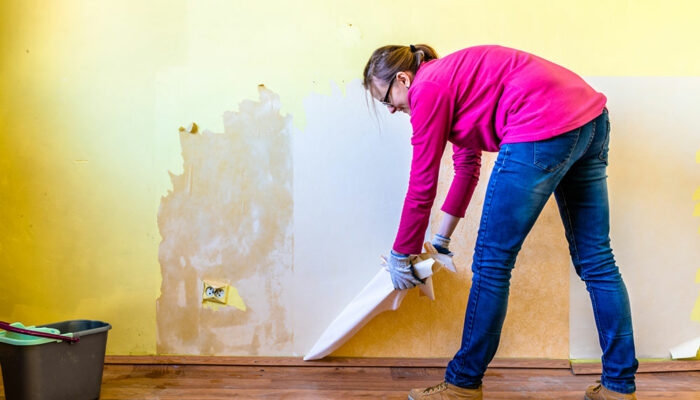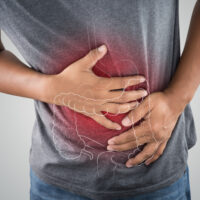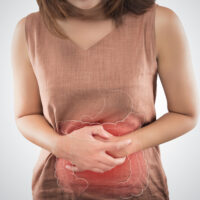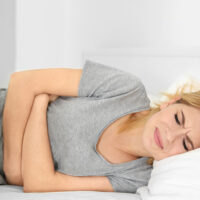A basic guide to tackling water damage and undertaking repairs
Did you just move into a new house and find that the ceiling is swelling up or the mold is growing on the walls? If so, it could be a case of water damage, which can cause massive losses if you don’t act promptly. A common occurrence, water damage is a disastrous situation that can also cause issues after the repair work is complete.

Types or common causes of water damages in a home
Predominantly, there are six leading causes of water damage that homeowners should know about:
Storm-related water damage
The most common and recognized type of water damage experienced by households is storm-related water damage. People who reside in areas that are more susceptible to natural disasters or high rainfall are at a heightened risk of facing the associated risks. So, it’s advisable to get a corresponding insurance policy to ensure protection and coverage for the costs. Homeowners who face water damage caused by a hurricane or any other typical storms should know that their insurer will cover the expenses for the damage during a storm. That being said, most insurance companies might not provide coverage in trivial cases of water damage.
Flooding
Another common reason for water damages that plagues thousands of households and properties is flooding, a natural disaster that might occur due to melting snow overflowing the water bodies or heavy rains. Several regions in the country are vulnerable to flooding, so it is a common cause of worry for homeowners. Flooding can bring in massive water damage that might need serious repairs.
Sudden or accidental damage
Accidental damage includes all kinds of unprecedented water damage, and there is no way to prevent these. Some of the common sources of water that can trigger an accidental or sudden discharge of water in a house are:
- Heating systems
- Pipes
- Steam boiler
- Air conditioner
- Sprinklers
- Hot water tank
Sewer overflow
A sewer overflow could lead to a discharge of water in the surrounding neighborhoods and homes. Many people may confuse this with accidental or sudden water damage, but these two causes of water damages aren’t the same. Insurance companies look at this as a different type.
Gradual water damage
As opposed to sudden or accidental water damage, progressive damage causes the water to emerge due to a small event like a drip or leak, which might escalate into a more severe problem.
Mold-related water damage
Lastly, we have mold-related water damage, which falls under the umbrella of gradual water damage. Usually, when there is mold in the home, it could be caused by water damage that went undetected. Insurance companies consider this to be a homeowner’s negligence.
Equipment used to tackle water damage
Some conventional pieces of equipment that can help in the process of water damage repair are:
- Air movers
Air movers are an excellent piece of equipment and work effectively in drying areas that undergo specific water damage. They facilitate fast and easy drying of surfaces like floors and carpets and ensure proper air circulation indoors, speeding up the water damage repair process. - Dehumidifiers
If you’re on the lookout for equipment to get rid of mold, dehumidifiers are extremely helpful. They help remove excess moisture in the air, which can otherwise cause mildew or lead to the development of mold. You can find dehumidifiers in a myriad of sizes and shapes, and you can pick one considering the size of your home. - Flood pumpers
This water damage repair equipment finds use in the most flooded areas, where it is almost impossible to remove water. In such areas, flood pumpers are installed to suck up the water.
Steps to follow for water damage repair
Before starting the process of water damage repair, you need to cut out all possible electricity and water sources until the repair work is complete. This is an important tip to ensure that you and your handyman are safe from dangers like electrocution. Read on for some steps that you, along with the contractor, can follow to bring your house back to its usual spick and span self.
Soak dry the entire affected area
Once you have determined the affected space, soak dry all the clogged water. If the water damage is not widespread, you and your professional cleaning team can install portable fans for a speedy drying-up and repair process. However, if the area is severely damaged, you might have to rent out a dehumidifier with a huge capacity to help dry out every affected wall and the floor in the area. Also, it will help absorb the moisture trapped in the carpet or wood. Drying the water limits the transfer of moisture and any associated effects and allows you to curtail the damage only to the affected area if you work promptly.
Check for mold or fungus
Mold, a type of fungus, can grow on anything that stays moist for over 24 hours, but this duration would be shorter if you stay in a humid region like Southern Florida. Usually, mold develops in the attic, but it can also grow in hidden areas like the area below the carpets or even inside wall bumps. It can also spread across the other regions in your house if the cause of the water damage is weak roofs, leaky pipes, or storm surge, leading to the necessity of heavy repair work.
Inexperienced homeowners aren’t equipped at treating mold, which can worsen the situation. It is strictly advised to get rid of everything that has mold growing on it and is likely to come in contact with your kids, pets, or any other person with a sensitive or compromised respiratory tract.
Additionally, if the mold thoroughly takes over any one of the walls, you should immediately take measures to close the place completely so that no air particles can cross it. This is important because certain molds transfer via air and can flow across the house. If mold spreads, the damage aggravates, so you must treat it as soon as you see it. To treat mold, you can contact a reputed fumigation agency and ensure that the mold is removed thoroughly from every furniture or wall that may have even a tiny bit of its growth.
Do away with porous products
Products like unsealed cement, carpets, and wood get porous due to water damages. The most effective way to prevent supplemental damage is by throwing away all porous products. Every porous product is susceptible to fungal infestation like mildew, which grows faster than mold. It has the potential to aggravate the damage and burn an even larger hole into your pocket. If the affected rug or furniture holds sentimental value, and you do not want to get rid of it, you can put it on your terrace under the sun for a few days to soak up all the moisture. However, no repair work can undo the water damage completely, so it’s best to get rid of all damaged products.
Clean and scrub the entire infected space
Drying out the affected space can prevent the spread of bacteria, but it would do nothing for the infestation. So, to kill any remaining bacteria, you should use bleach or a cleaning solution to clean the entire affected area.
Fix the ceiling if it is swollen
A swollen ceiling is at risk of collapsing, which could bring in massive health or financial damage. So, you should immediately find the reason for the leakage that has led to a swollen ceiling and take steps to fix it. If the water damage occurred because of a natural phenomenon like rains, some open pores would need repair as moisture or water could seep in through them. A proactive measure would be to look for these open pores and caulk them to prevent further damage to the property. On the other hand, if the ceiling swelled up because of leakage from an internal pipe, you must take measures to locate this porous pipe and fix or replace it. It is best to hire a professional in such cases, as they are trained to quickly look for the cause or origin of the leakage and curtail the damage.
Replace the defective wood
The structure of your house primarily relies on the sturdiness of the wood, so even if one piece is damaged, it can spread through the house and cause severe consequences. To prevent the damage from spreading, you should inspect every nook and corner of your house once the water damage repair is completed and note every piece of wood that requires replacement. That being said, you must have replacement support that you could put in place of an affected wooden plank to ensure that the nearby structures are not weakened and to prevent a collapse. Additionally, soaked up wood can lead to the development of mold and mildew, which can bring a higher risk of damage to the property.
Replace the flooring
If you have a carpet covering the wooden floor that is thoroughly soaked in water, you must clean it thoroughly. If you think that just getting rid of the carpet will eradicate the risk of potential damage, you are mistaken. The wooden flooring beneath might swell up if you leave the soaked carpet on it for long or if you don’t dry it well. Wood can soak up water and excess moisture if you remove the carpet but don’t dry the area. So, you will need flooring that will not soak moisture or water, and one of the best alternatives is concrete floorings like ceramic tiles. You can also opt for waterproof flooring to prevent water damage and the cost of repairs. Although it may be initially pricey, it has a long life, making it the most cost-effective flooring alternative for the long-term.
Close the open spaces
If you are not alert and don’t fill up unwanted open spaces that may form at times, it can put you at risk of sustaining severe water damage. This is because when the pores are open, they allow water to seep in, so you should routinely survey the affected area and check for any open pores. You can take measures to caulk them using a chemical solution or cement. The latter does the job quicker than clay or chemical.
Prime, paint, and polish
Once all the replacement and water damage repair is done, the previously affected space might look raw. You might see cement patches or solutions everywhere, which is not aesthetically appealing. So, you can take steps to conceal the recovered areas by priming and painting them. With this, your walls will look new and fresh. When you paint the walls, you can simultaneously check for any pores remaining in those areas. By the end of it, the entire space will look smooth, fresh, and aesthetically pleasing. Not to mention, you can paint the whole wall or room according to your preferences if you didn’t like the color it was earlier. You can also consider furniture polishing as an effective measure to kill the tiniest bits of bacteria lurking even after damage control. As a result, your furniture will be bacteria-free and will look as good as new.
Dealing with water damage and sitting through the repair process is a cumbersome experience, but knowing the ways and means to tackle the damages makes it easier to overcome.





